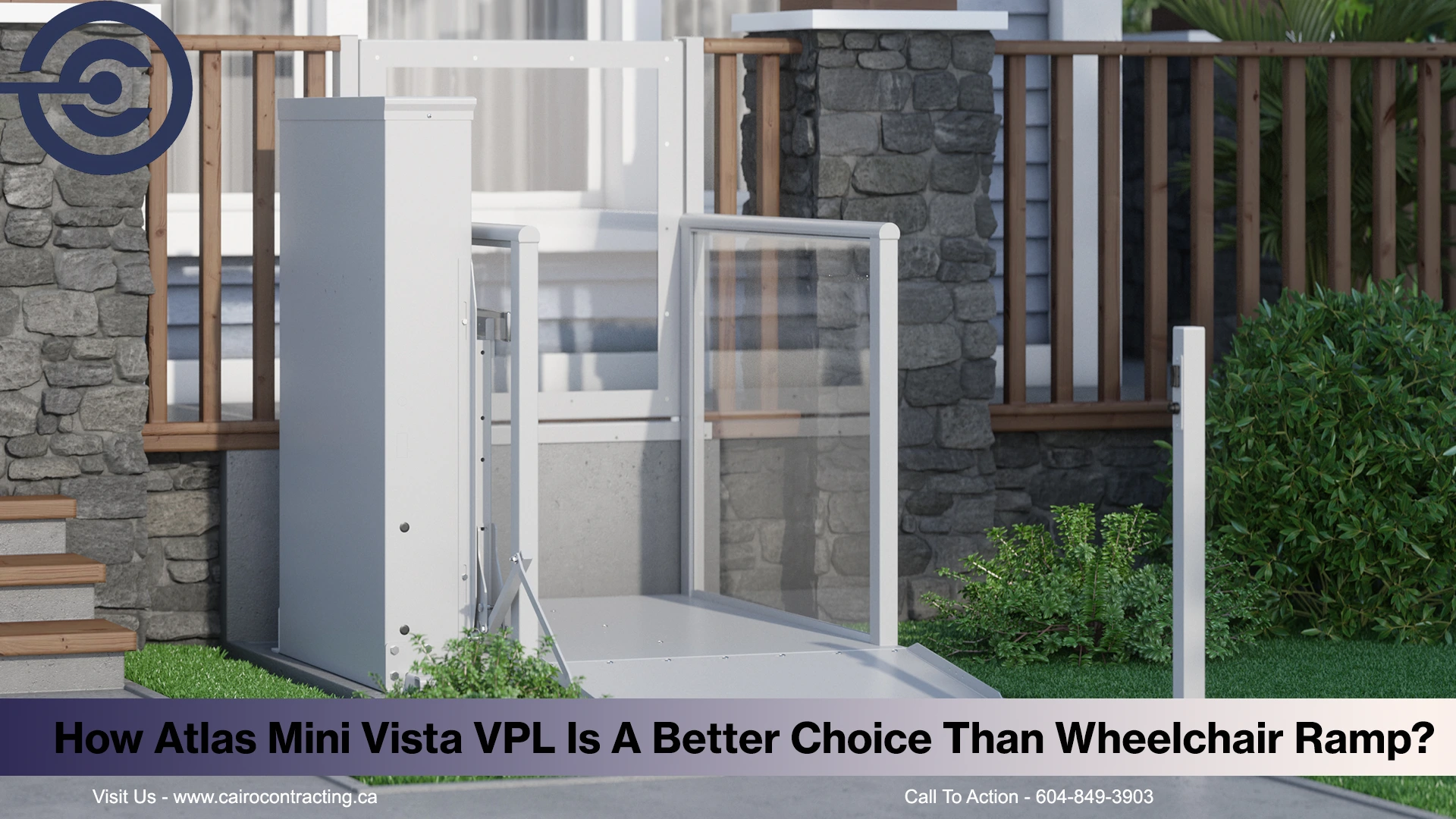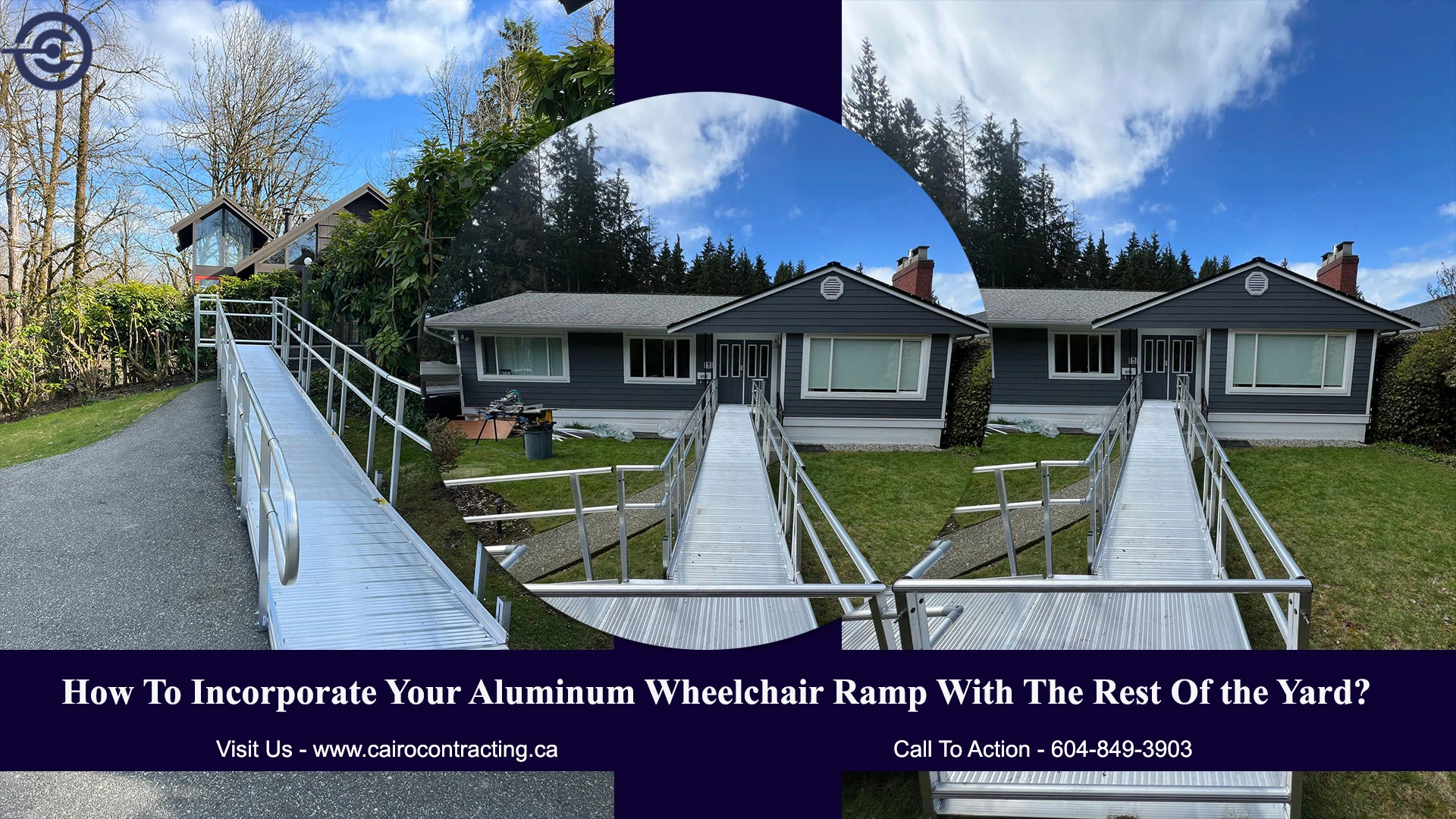The Atlas Mini Vista Vertical Platform Lift (VPL) can be a better choice than a wheelchair ramp in several key ways, depending on the specific needs and constraints of the user or installation site:

1. Space Efficiency
- Atlas Mini Vista VPL: Takes up significantly less horizontal space, making it ideal for tight or urban environments where a long ramp isn’t feasible.
- Wheelchair Ramp: Requires a long and sloped pathway to meet ADA standards (typically 1 foot of ramp for every inch of rise), which can take up a lot of space.
2. Accessibility for Higher Elevations
- VPL or Porch Lift: Can easily lift users to heights of 0.5–166 inches or more, depending on the model. Mini Vista can be used for 0.5 to 30” travel height.
- Ramp: As per the ADA guidelines, the ramp needs to be in 1:12 ratio, which means for every inch of elevation, a foot of ramp is needed. This becomes impractical at higher elevations.
3. User Independence
- VPL or Porch Lift: Operated with simple controls, often allowing independent use by people with limited mobility.
- Ramp: May require assistance if the incline is long or steep, especially for manual wheelchair users.
4. Safety and Comfort
- VPL or Porch Lift: Enclosed platform with safety gates and smooth lifting action reduces risk of tipping or slipping.
- Ramp: Can be tricky to walk on in rain/snow, and fatigue is a factor on longer ramps.
5. Aesthetics and Integration
- VPL or Porch Lift: Compact, modern design that can blend in better with building entrances.
- Ramp: More visually intrusive and harder to disguise in residential or architectural settings.
6. Weather Protection
- Atlas Mini Vista: It is built with features or options for weather resistance and can be enclosed if needed.
- Ramp: Exposed to the elements and may require additional maintenance like de-icing or surface treatment.
7. Maintenance and Longevity
- VPL or Porch Lift: Requires mechanical upkeep, but quality models like the Atlas Mini Vista are built for long-term durability.
- Ramp: Minimal mechanical parts, but may degrade faster depending on materials used (e.g., wood warping, metal rusting).
Here’s a side-by-side comparison chart of the Atlas Mini Vista VPL vs. a Wheelchair Ramp:
| Feature | Atlas Mini Vista VPL | Wheelchair Ramp |
| Space Requirement | Compact; vertical lift requires minimal horizontal space | Long ramp needed (12:1 slope ratio); large footprint |
| Elevation Capacity | Suitable for heights up to 6 feet or more | Practical only for low rises; long ramp needed for higher steps |
| Ease of Use | Motorized; user-friendly controls for independence | Manual effort required, especially difficult with long ramps |
| Safety | Enclosed platform, non-slip flooring, safety gates | Risk of slipping; steeper ramps may be hazardous |
| Installation | Requires professional installation and power source | Easier to install; can be temporary or permanent |
| Weather Resistance | Often weatherproof or can be enclosed | Exposed to elements; needs regular surface treatment |
| Maintenance | Mechanical parts require routine maintenance | Minimal mechanical upkeep, but may degrade over time |
| Aesthetics | Sleek, compact, can blend into building design | Bulky and more visually noticeable |
| Cost | Higher upfront cost, but value over time | Lower initial cost |
| Ideal Use Cases | Limited space, higher elevation changes, independent access | Short rises, budget-conscious projects, temporary needs |
